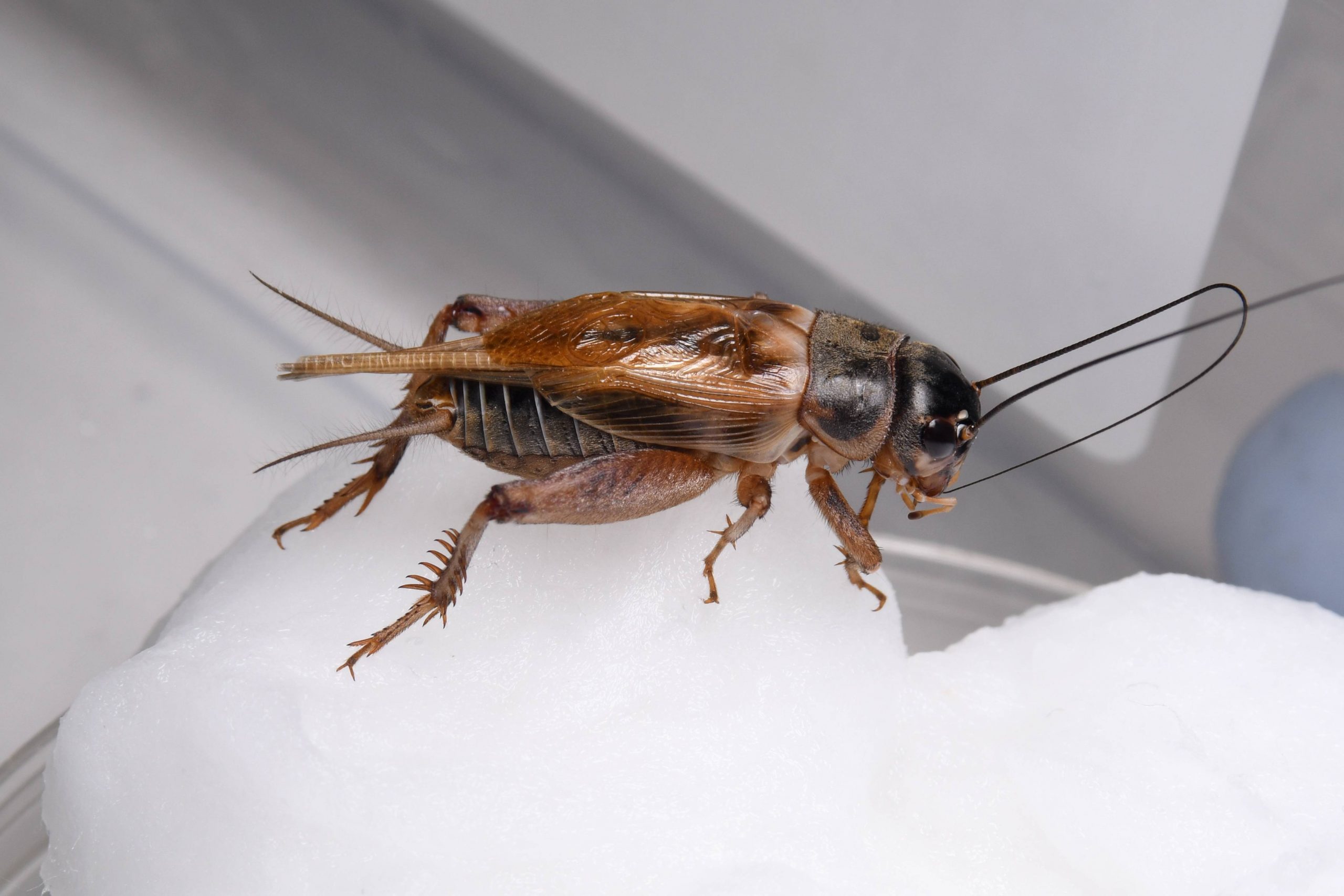Long-winged Gryllus lineaticeps.
Crickets in the genus Gryllus exhibit phenotypic plasticity. Under certain conditions, crickets can either be flight capable with long wings and can fly to the songs of faraway mates and resources in times of scarcity. And some are short-winged, bound to the surrounding land and nearby mates but endowed with greater fecundity. But how can two individuals from the same species display such different traits – how much is genetics, how much is environmental, and how do they come together?
UC Berkeley Professor Caroline Williams shares her insight on this adaptive phenomena. Since 2017, Dr. Williams has published numerous articles regarding how the cricket’s life history, physiology, and metabolism interact. With a grant funded by the National Science Foundation EDGE (Educational Pathways to Increase Diversity in GEnomics) program, Williams and her lab uncover the connection between the cricket’s genes and wing phenotype.
Interviewer: “Why Gryllus crickets?”
CW: “Well, these crickets have flight capable and capable within the population. So some of them have long wings and can fly, which helps them to disperse, find mates, and lots of other things. And then some of the crickets have short wings so they can’t fly. And instead, they reproduce earlier. So they get benefits of increased early life fecundity. And these two forms are maintained within populations as polymorphism.”
Long-winged Gryllus lineaticeps (left) Short-winged Gryllus lineaticeps (right)
Interviewer: “How are phenotypes connected to genotype?”
CW: “The interesting thing about these types of phenotypes is that they’re jointly determined by the genes. And it’s not just one gene. There’s lots of small effect genes, and we don’t know which ones. And by the environment, they’re very plastic. So it’s difficult to untangle because if you pick up a cricket in the field, you can see it’s got long wings or short wings but that doesn’t really tell you about the actual liability.”
The relationship between genotype and phenotype is complex. Without knowing which genes are determinant, the specific environmental conditions that are determinant are also unknown because a correlation cannot be made. But Williams and colleagues have discovered a different way to understand the relationship by using the threshold trait model and an enzyme they have discovered to be a liability marker.
Interviewer: “So what is the threshold trait model?”
CW: “The model that we use to describe this is called the threshold trait model, where you’ve got an underlying liability for an individual to be one morph or the other, combined with a threshold. If liability is above the threshold, they become long-winged and if they’re below they become short-winged. This model is also used in human diseases like schizophrenia and is relevant to many kinds of lifecycle polymorphisms. Because it explains how quantitative genetic variation and many, many genes of small effects can be converted into a dichotomous phenotype.”
The underlying liability in this case, is the juvenile hormone esterase.

Interviewer: “What is the juvenile hormone esterase?”
CW: “The juvenile hormone pathway is involved in determining the wing morph, so we can measure the enzymes that break down juvenile hormones (called the juvenile hormone esterase), and the activity of that level is a really good proxy for which morph they’re going to turn out to be.”
Interviewer: “How is that measured?”
CW: “We take blood from the crickets and we measure the esterase activity in the blood at this particular time in the juvenile stage before they even have wings. And we can predict perfectly what they’re going to become. Then we do some rearing experiments where we manipulate the important environmental drivers of the phenotype, which is like light and temperature. And we can measure both how much the phenotype of wing length changes and also individually how the liabilities change as measured by that JH esterase levels.”
Interviewer: “Where do you hope to go from here?”
CW: “We’re hoping we can develop an understanding of how climate variation on seasonal scales puts selective pressures on life histories, one of which can be the maintenance of these polymorphisms. We’d like to start looking along latitudinal gradients at northern and southern populations. There’s always lots of things that we want to do.”
Professor Caroline Williams (center) and lab
Story by:
Sloane Sim, Media Specialist
Essig Museum of Entomology




